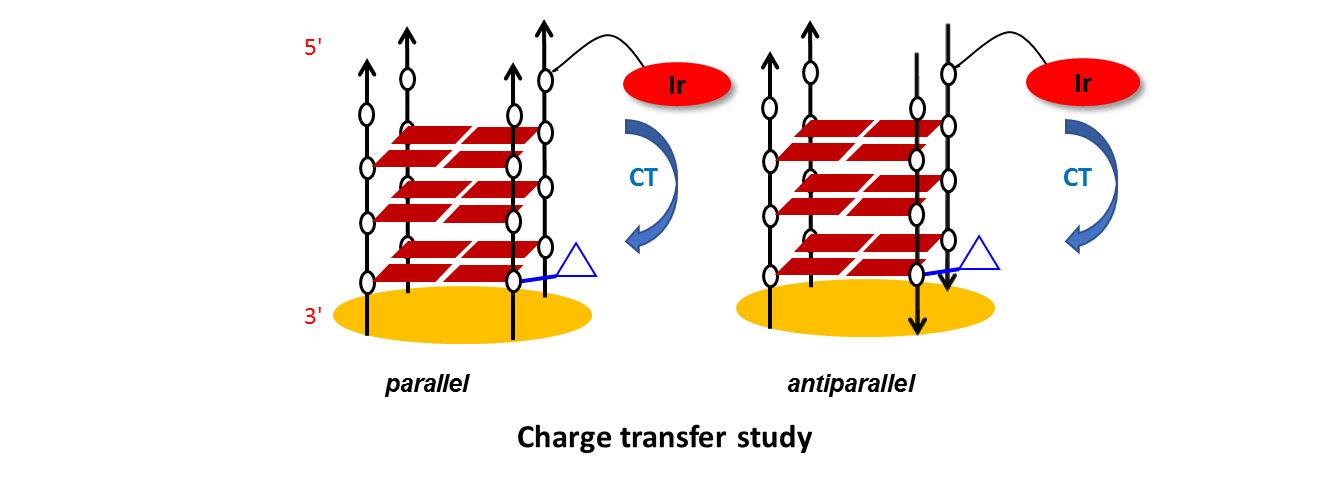- Imprimer
- Partager
- Partager sur Facebook
- Partager sur X
- Partager sur LinkedIn

G-quadruplex nucleic acids (G4-DNA and G4-RNA) are formed from G-rich sequences through the stacking of two or more G-tetrads which are stabilized by Hoogsteen hydrogen-bonded guanines and connected by various loop-forming sequences. G4 are involved in several biological processes and are now considered as an emerging class of drug targets (e.g. cancer and virus infection).
A major characteristic of G-quadruplex nucleic acid structures is their intrinsic polymorphic nature. In this context, we have developed a strategy termed “Template Assisted Synthesis of G-Quadruplex” (TASQ) that consists in constraining the accessible topologies of a G-quadruplex-forming sequence to a single one by using a rigid cyclic peptide scaffold as a topological template.
A number of constrained G4-DNA derived from the human telomeric sequence have been designed with parallel (ChemBioChem 2008) and antiparallel topology (Chem. Comm. 2015 ; Org. Biomol. Chem. 2019) as well as G4-RNA (Chem. Eur. J. 2016) but also G4 DNA derived from the HIV genome (Chem. Eur. J. 2017).
Within this research topic, those G-quadruplexes systems are currently used for:
- Studies of the interactions with G4 ligands: internal collaboration with J. Dejeu and F. Thomas (ChemMedChem 2016) and external collaboration with G. Pratviel - LCC Toulouse (Dalton Trans. 2015).
- Proteins pull-down and characterization (to investigate G4 structure-proteins relationships) in collaboration with D. Gomez (IPBS - Toulouse) and J.-F. Riou (MNHN - Paris)
- Production of antibody specific for a single G-quadruplex topology (to answer the question of the in vivo topology of G4) in collaboration with N. Scaramozzino (LiPhy - Grenoble).
This project is supported par ANR (n° ANR-16-CE11-0006-01, G4-TopIPro)
In collaboration with B. Elias from UCLouvain, we also aim at studying the charge transfer through predetermined G-quadruplex topology (based on the use of the TASQ strategy). The charge transfer is performed by using photo-reactive iridium complexes anchored in one strand of the G4 system.
This project is supported by Région Auvergne-Rhône-Alpes and International Strategy Program from IDEX-UGA.

Project Staff
- Imprimer
- Partager
- Partager sur Facebook
- Partager sur X
- Partager sur LinkedIn